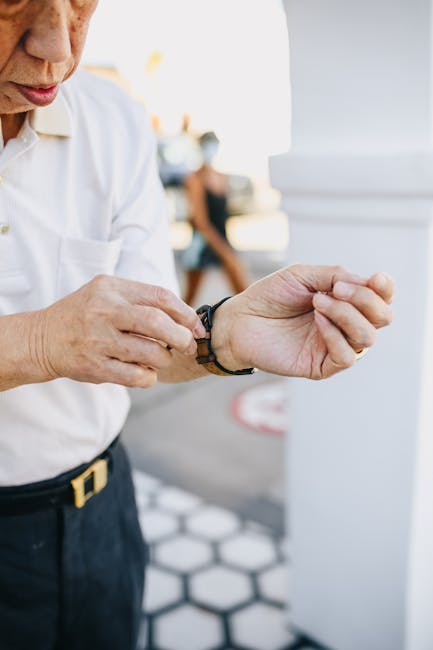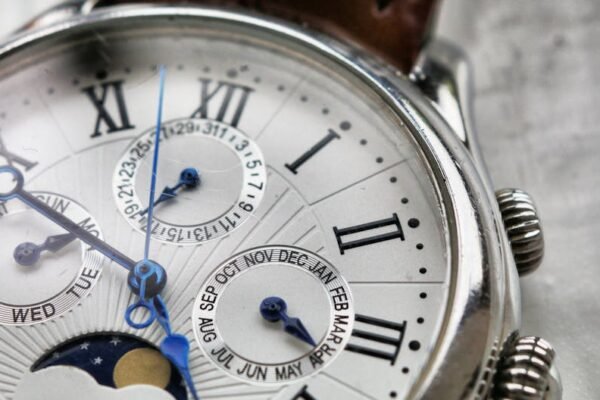
Unlock the Timeless Charm of Vintage Mechanical Watches
The allure of vintage mechanical watches is undeniable. Behind each timepiece lies a kaleidoscope of history, craftsmanship, and intricate movements that enthusiasts and collectors around the world cherish. However, preserving these timeless treasures requires more than just admiration—it demands a meticulous touch and the right tools. Today, we delve into the indispensable kit for repairing vintage mechanical watches, ensuring these historical marvels tick beautifully for generations to come.
Repairing a vintage watch isn’t merely a matter of tweaking a few gears; it’s about respecting the storied legacy within each piece. Whether you’re a seasoned horologist or a passionate hobbyist, having a specialized toolkit is crucial. From the delicate manipulation of miniature springs to the precise adjustment of gears, every repair is a testament to patience and precision. This guide will not only introduce you to the tools that make watch restoration possible but also ignite a deeper appreciation for the artistry behind mechanical watches.
Each tool in the kit has a story to tell—a role to play in breathing life back into these exquisite mechanisms. From screwdrivers that fit the tiniest screws to magnifying glasses that reveal the most intricate details, these tools are the unsung heroes of watch repair. It’s a journey of discovery, where each component unveils a piece of history and craftsmanship.

Maximize Precision with the Right Tools for Watches
When it comes to working on watches, precision is key. This couldn’t be more true, especially in tasks that require a high level of detail and accuracy. The use of appropriate tools is not just recommended; it is essential for anyone looking to maintain or repair watches. These tools are designed to complement the intricate nature of watches, enabling professionals and hobbyists alike to achieve the best results.
Whether you’re replacing a battery or adjusting a watch’s movement, the right set of tools can make a significant difference in the outcome. From tweezers and screwdrivers that fit just right, to case openers and movement holders, each tool serves a unique purpose. By investing in quality tools, you not only ensure the longevity of your watch but also enhance your skill set. Remember, in the world of watchmaking, the right tools are your best ally in achieving perfection.
Basic Guide: Start Your Journey in Watch Repairing
Embarking on the journey of watch repairing can be both a fascinating and daunting task. The world of timepieces is intricate and demands not only patience but a keen attention to detail. Whether you are a hobbyist looking to dive into a new venture or someone with a genuine interest in horology, understanding the basics is your stepping stone towards mastering this craft.
Understand the different types of watches – from mechanical to quartz, each has its own unique mechanism and repair techniques.
Invest in the right tools – a basic toolkit includes screwdrivers, tweezers, and a magnifying glass.
Learn to dismantle a watch carefully – practicing on an inexpensive watch can be a good start.
Get familiar with common issues – such as battery replacement, strap adjustment, and water damage.
Study the movement – know the parts of a watch and how they interact.
Practice reassembling with care – ensuring every piece is placed accurately is key to functionality.
Seek knowledge from experts – books, online forums, and courses can be invaluable resources.
Maintain patience and precision – both are essential qualities for any aspiring watch repairer.
This guide merely scratches the surface of what is a deeply rewarding skill. Remember, every master was once a beginner. With perseverance and the right resources, you can embark on this timeless journey.

Maintenance Steps for Historical Watches
Maintaining historical watches is not only about preserving their functionality but also about conserving a piece of history. These timepieces carry stories and craftsmanship of the past, making them invaluable to collectors and enthusiasts alike. The first step in maintenance is a thorough inspection to identify any wear or damage. This should be done by professionals who can understand the intricate mechanics and historical value of the watch.
Another crucial step is regular cleaning and oiling of the mechanical parts. Over time, dust and other particles can accumulate, causing friction and damage to the moving components. It’s essential to use the correct tools and techniques to avoid harming the watch further. Moreover, maintaining the correct humidity and temperature conditions is vital for preventing rust and deterioration. Remember, each watch has its story and specific needs, so tailor your maintenance approach accordingly for optimal preservation.
Embarking on the journey of repairing antique mechanical watches can be a fascinating venture, full of historical allure and technical challenges. Nonetheless, it’s a path strewn with pitfalls that can turn this intriguing endeavor into a nightmare of mishaps and missteps. Here, we delve into some commonly encountered errors to help both novices and seasoned enthusiasts alike ensure their timepieces tick along for generations to come.
Common Mistakes to Avoid When Repairing Antique Mechanical Watches
Skipping Research: Diving into repairs without understanding the specific requirements and history of the watch can lead to irreversible damage.
Using Inappropriate Tools: Employing tools not designed for watchmaking can mar the delicate components of a vintage timepiece.
Forcing Parts: Applying too much force can break or distort tiny, often irreplaceable parts.
Omitting Lubrication: Neglecting the proper lubrication can accelerate wear and tear on the movement’s components.
Ignoring Water Damage: Failing to properly address water damage can lead to extensive corrosion and movement failure.
Overlooking Rust: Rust not only affects aesthetics but can also seize the movement, halting the watch entirely.
Improper Cleaning Techniques: Using harsh or unsuitable cleaning methods can damage the delicate parts of the movement.
Misaligning Reassembly: Incorrect reassembly can prevent the watch from functioning correctly and may even cause damage.

Essential Elements in Your Watch Repair Kit
When it comes to maintaining the pristine function of your timepieces, having a comprehensive watch repair kit is imperative. This toolkit is not just for professional watchmakers; even enthusiasts who cherish their collection will find immense value in owning one. A well-equipped kit should include a variety of tools tailored for specific tasks. Screwdrivers of various sizes are crucial for removing tiny screws on watch backs, while watch case openers make accessing the internal components a breeze without causing damage.
Furthermore, a set of tweezers is indispensable for handling small parts, reducing the risk of losing them during disassembly. Spring bar tools allow for the easy removal and fitting of watch straps, which is essential for cleaning or replacing them. Another key component is the loupe, a magnifying tool that provides the clarity needed for inspecting small parts and ensuring precise work. While not all repairs can be done at home, having these tools can save trips to the watchmaker for minor adjustments or quick fixes. Hence, investing in a quality watch repair kit can not only prolong the life of your beloved watches but also enhance your understanding and appreciation of their intricate mechanics.
FAQ: Importance of Using Specific Tools for Vintage Mechanical Watches
Understanding the value and intricacies of vintage mechanical watches highlights the necessity of using the right tools for their maintenance. Below you’ll find a series of questions and answers designed to shed light on why this is so critical.
Why is it important to use specific tools for vintage mechanical watches?
Using specialized tools is crucial when dealing with vintage mechanical watches because these timepieces are often delicate and require precise handling. The internals of these watches can easily be damaged by unsuitable tools, leading to expensive repairs or irreversible damage.
What are some examples of specific tools needed for these watches?
- Screwdrivers: Used for removing and tightening small screws without stripping them.
- Caseback openers: Essential for opening the watch case without scratching it.
- Hand removers: For safely removing the hands from the watch face.
- Movement holders: To securely hold the watch movement while working on it.
Can regular household tools be substituted for watch-specific tools?
While it might be tempting to use regular household tools, it’s highly discouraged. Household tools are generally not designed with the precision and delicacy needed for vintage mechanical watches. The risk of damaging your watch is high, making the minimal cost savings not worth it in the long run.
Where can these specific tools be acquired?
Specialized tools can be found at watchmaker’s shops, online retailers specializing in watch tools, and sometimes at hobbyist stores. Investing in quality tools from reputable sellers is important to ensure you’re getting tools that won’t damage your cherished timepieces.





